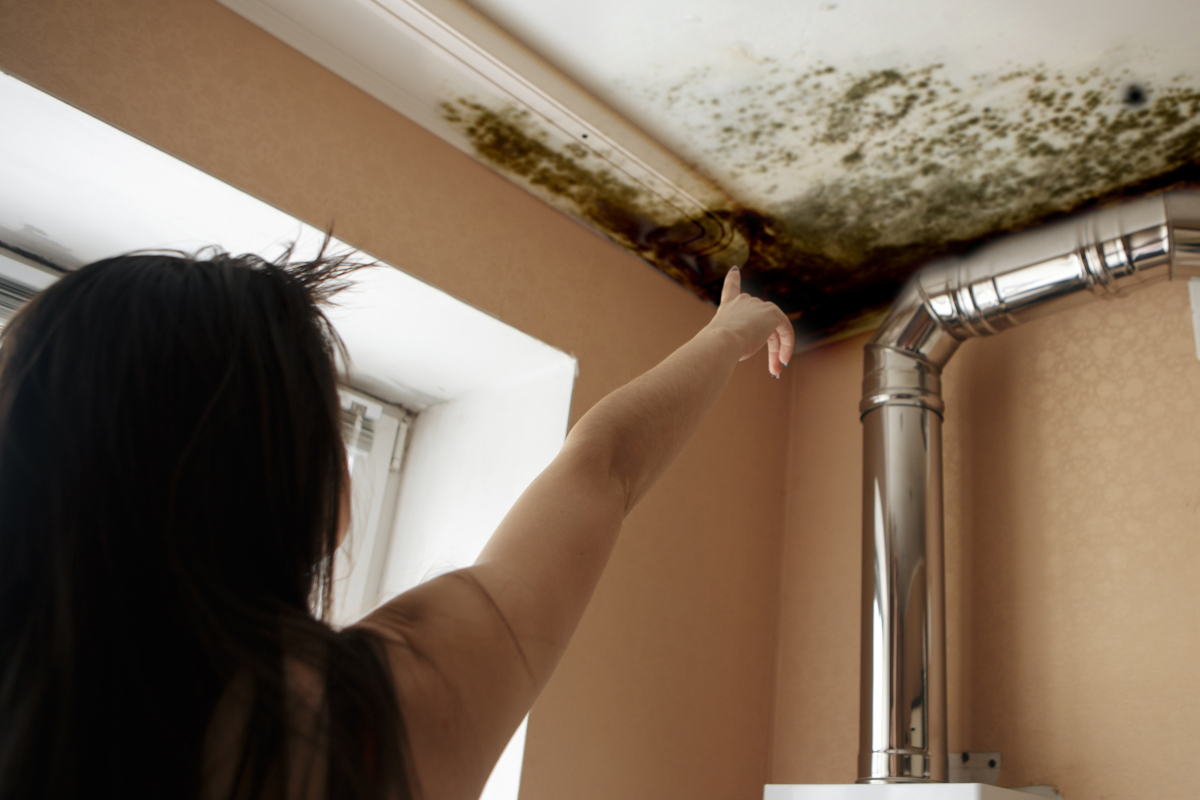The Environmental Protection Agency (EPA) has strict guidelines to ensure the protection of human health and the environment. Part of that mission pertains to compliance standards regarding mold, especially in homes and commercial buildings.
So, What Is Mold, and Why Does It Grow in a Residential or Commercial Structure?
Mold is natural and comes from environmental factors such as dead organic matter, such as dead trees and fallen leaves. It flourishes in the wild and is a major player in breaking down biomass and decomposing organic material. While it’s an essential part of our ecosystem, it’s not something you want growing in your home.
Through tiny spores that float through the air, mold reproduces and multiplies rapidly when it lands on wet or moist areas.
Why Does Mold Cause Health Issues?
Many health problems stem from mold, which produces allergens, irritants, and sometimes even toxins. These potential issues can cause allergic reactions, asthma complications, and irritation to the eyes, nose, throat, lungs, and even skin of those exposed.
Reactions to mold can sometimes be immediate, while other times, depending on the individual, they may be delayed or even ongoing. Because allergies to mold are so common, many residents face health issues when dealing with areas rich in these fungi.
When to Get Rid of Mold
The first step in eliminating mold is determining its scale and severity. Because mold feeds on moisture and can quickly spread out of control, it’s crucial to deal with it immediately.
Now, minor mold issues (around 10 square feet) can be managed without the need for an expert or hired service. That being said, plenty of stipulations require professional involvement, especially in schools, municipalities, and commercial buildings.
Water Damage
If there is significant water damage, the mold issue will likely cover more than 10 square feet. In that case, take a look at the EPA’s Mold Remediation in Schools and Commercial Buildings Guide. It’s a great tool for determining damage, even though it focuses on schools and commercial structures.
Mold in Ventilation
Sometimes, mold can make its way into your home’s heating, air conditioning, or ventilation components (or possibly near the intake). A professional with mold certification by the EPA will likely need to perform cleanup and ensure that all contaminants are out of your systems. Running the HVAC system during this time could spread mold throughout the home or building, widening the problem.
Mold Caused By Sewage
Mold or water damage caused by contaminated water requires an expert. Not only can this type of mold be especially toxic, but it’s also much harder to clean and get rid of properly. For this very reason, professional mold assessment and removal are necessary for safe elimination.
Health Issues
It should be reasonably obvious that significant enough mold issues that cause health concerns should be handled immediately. As mentioned, mold is a common allergen and can even be toxic. A bad mold infestation can cause a wide variety of symptoms and can be highly uncomfortable for residents or visitors. Professional mold removal should be of the utmost importance if health issues present themselves.
How is Mold Removed
There are plenty of ways to clean up and remove mold. If it’s a DIY project, safety is always of the utmost importance. While mold may be adequately removed, it can leave staining that may require replacing or maintenance to return a surface to its original state.
Some helpful home removal tips are:
- Use detergent and water to scrub mold off any hard surfaces, and allow it to dry completely so that the mold does not spread
- Take note of any porous areas or absorbent materials that have mold growth (ceiling tiles, carpeting, etc.). You’ll need to throw these out as they are nearly impossible to clean thoroughly.
- Refrain from painting or adding caulk to any surfaces that contain mold. Mold can cause new layers of paint to peel, so all mold must be adequately cleaned off before painting.
- Mold is caused by moisture, so water problems and leaks are likely the suspects. Fix these to prevent further issues.
- Take safety precautions and avoid exposure by wearing the appropriate clothing when cleaning up mold.
When a mold problem becomes too extensive for a homeowner to handle or when the situation is unclear, it’s essential to bring in a trained professional. Certified contractors are equipped to inspect, remediate, and safely remove mold using industry-approved methods. Their EPA certifications ensure they follow strict safety and health protocols throughout the process. Professionals who complete training, such as that offered in a lead certification course near Woodbury, are qualified for mold removal and well-versed in handling hazardous materials. This level of expertise ensures that mold is assessed and appropriately removed, minimizing health risks and preventing future growth.
How to Prevent Mold From the Start
Perhaps the best way to fight mold is to prevent it from the start. Mold feeds off moisture, which means controlling moisture is crucial. A quick cleanup can make a significant impact whenever spills or water leaks happen in the home.
According to the Federal Emergency Management Agency (FEMA), mold and mildew can develop within 24-48 hours of water exposure and will continue to grow until they are removed. So, spills and leaks are the main culprits and require swift action.
Proper drainage can also prevent mold buildup. Roof gutters serve an essential function and must be cleaned regularly to ensure that they work properly. Broken gutters will also need repairs so that water runoff doesn’t end up where it shouldn’t. Another important aspect of drainage is where the building lies. All ground should slope away from the foundation so that water runoff doesn’t end up in the building.
Maintain indoor humidity and keep the number low if possible. A good number to shoot for is 30-50% (ideally below 60%). A humidity meter is reasonably cheap and can save homeowners big on mold removal in the future.
Certain areas of buildings have natural moisture buildup. Pipes, some walls, and especially windows release condensation, leading to mold. Dry these areas and surfaces often to prevent buildup.
For Professionals
Those who work in fields that impact mold requirements by the EPA must have certifications that abide by compliance standards. Every area has its own required training and certifications, so it’s important that professionals know where they stand.
Both individuals and companies that work in areas where mold is present must have certifications before starting work. Types of work can include:
- Mold inspection
- Mold abatement
- Restorations doing mold remediation
To get a mold certification, professionals must register for a class, attend regularly, and complete all requirements. Specific jobs require individuals to hold more than one mold certification, so it’s essential to understand the type of work involved and what qualifies as certification. Mold certifications also have expiration dates, so professionals sometimes need to take refresher courses to comply with EPA regulations.


